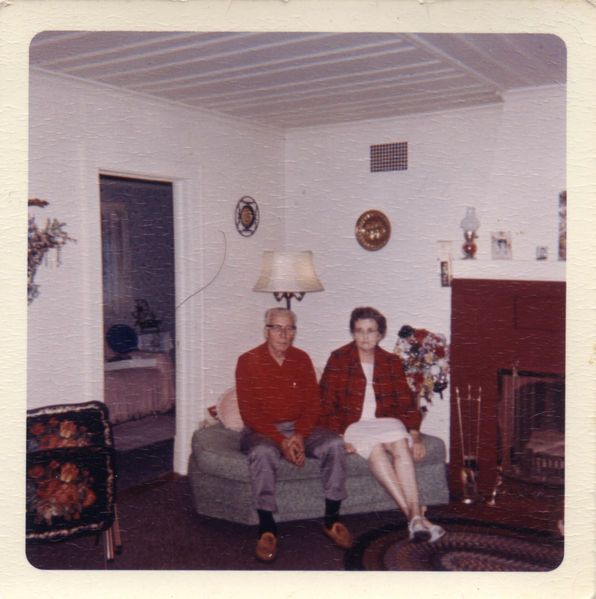 |

| |
|
|  |
John Deere 820, 1960s
 The John Deere 820 was, by some accounts, manufactured in the late 1950s, although some for sale say they were made in the 1970s. Known for its large-displacement 2-cylinder motor with excellent gear ratio, the 820 has been popular in tractor-pull events due to its inability to stall. This photo was the tail-end of a roll of slide film, and the film wasn't large enough to fit into a standard slide frame. The owner made due by tracing a slide frame onto cardboard, cutting it out, and taping the film into it. Labels: 1960s, 820, farming, john deere, tractor
Studebaker Municipal Vehicles, 1962.
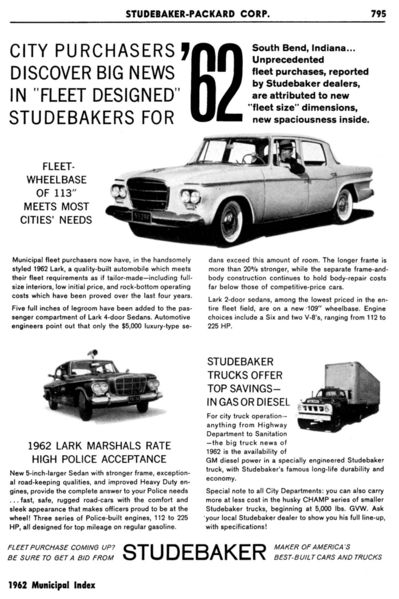 The 1962 Studebaker Lark had all sorts of features that a city would want in a fleet vehicle: the compact Lark was redesigned for 1962, with a 5" longer frame and a 109" wheelbase, and their "police-built" engines came in 112 and 225HP versions on 'regular' gasoline. Studebakers had been operating as police cars for several years before, but a larger, more robust machine was hoped to increase their scope. Sadly, just a couple years later, the Studebaker was gone in the U.S. after 1966. Labels: 1960s, 1962, automobilia, studebaker
Riding The Dog, 1930s.
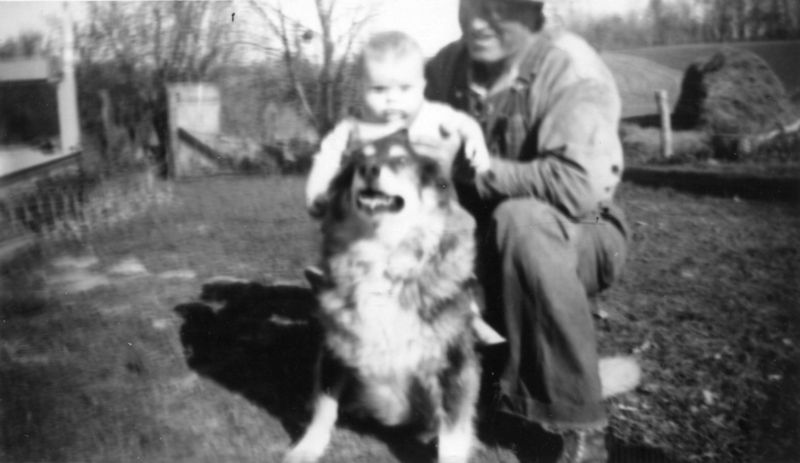 Baby, appearing to ride a dog, with the help of an older man in farming clothes. Appears 1930s. Labels: 1930s, baby, dog, grandpa
Ed Nelson, WNAX, 1964.
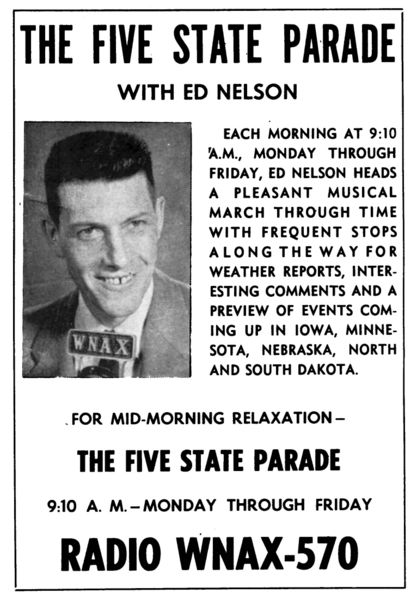
Ed Nelson had only worked for WNAX in Yankton, SD, for a couple years before he was hosting the morning news-and-music show, The Five State Parade, for 'mid-morning relaxation'. You know that you're listening to a farmer-focused radio station when 9:10am is 'mid-morning'. Anyhow, Nelson stays with WNAX for another twenty years or so, retiring in 1988. Labels: radio history, south dakota history, wnax, yankton
Armistice Day, 1910s.
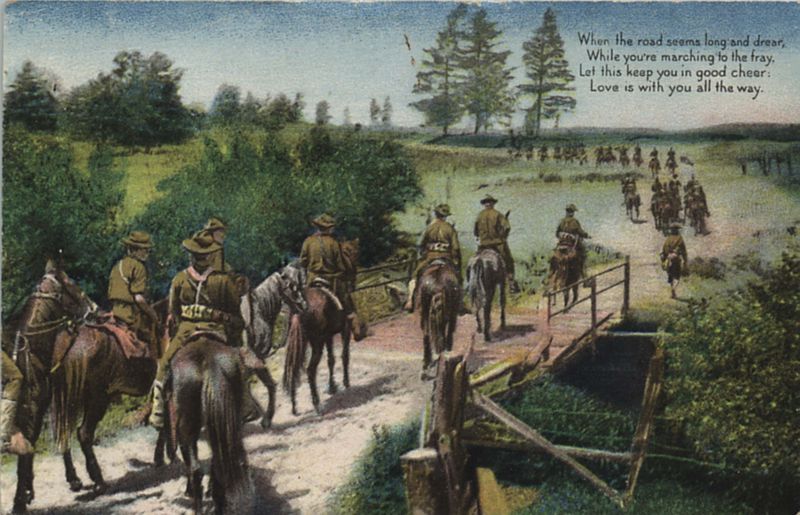 Today is Armistice Day, commemorating November 11, 1911. It first was just a celebration of the end of the largest war the world had ever seen, but as time passed and we saw that, no, wars could get much, much worse, the day was changed to Veteran's Day, honoring those who fought in those wars. Labels: 1910s, armistice day, soldiers, veterans day, WWI
Climate Map of North America, N.D.-Centric, 1929.
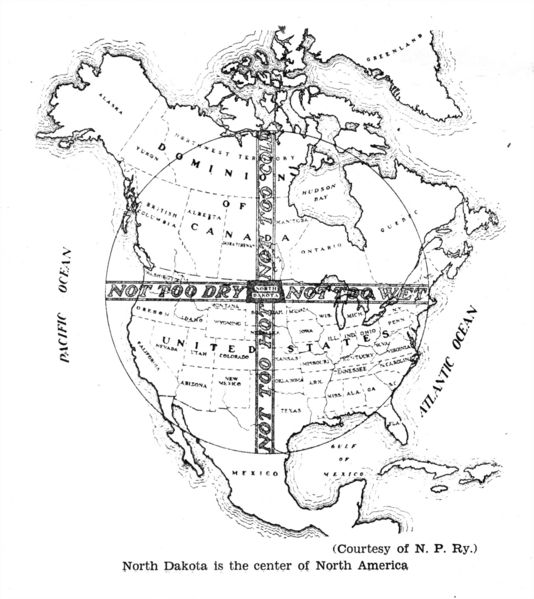 Saying " North Dakota is the center of North America" is a factual truth; just outside Rugby N.D. is a monument to that fact. What's more remarkable is the interpretive turn: the map paints North Dakota as the baby bear's porridge of our continent. West is Too Dry, north is Too Cold, east is Too Wet, and south is Too Hot. North Dakota meets in the middle, and is thus the perfect place to live, right? I'm a fan of the state, you know, but we're actually in a position that gets all of the above: deadly droughts, destructive floods, sub-zero winters and 100°+ summers. It seems the cartographer who drew the map was mistaking us for Hawaii. I know, it's an easy mistake to make, but it's an over-simplification of what North Dakota's climate is like. Labels: 1929, maps, north dakota history
The Linotype Machine, 1915.
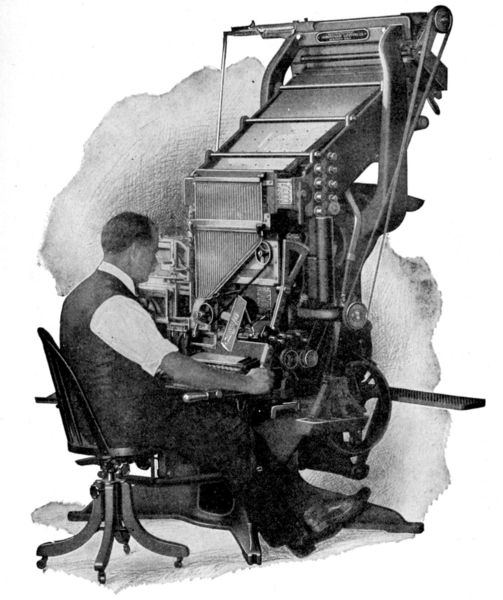 Above is the proto-blogger: a Linotype compositor. From the days of Gutenberg, publishing had been completed by assembling tiny chunks of metal with embossed letters on the top edge. The Linotype machine simplified the process by casting those metal letters in entire lines at a time, by means of a keyboard, ready to go to the press. I've seen these amazing machines in operation first-hand, and have several text 'slugs' around here, some with my and my kids' names on them. The machines are completely mechanical, produce an amazing amount of text in a very short amount of time, and later versions (they were used well into the late 20th century) even had the ability to operate unmanned, receiving instructions via the news-wires. Unlike blogging compositors today, due to their size and expense Linotype machines rarely made it to the ranks of amateur publishers, but did help move the ability to composite type from the hands of skilled master typesetters to anybody that could be trained to use the keyboard. If you'd like an overview of how these amazing machines worked, you can see a section from an article in The Book Of Wonders.Labels: 1910s, 1915, linotype, typesetting
Horses Pulling Cart, 1930s
Goldwater For President, 1964.
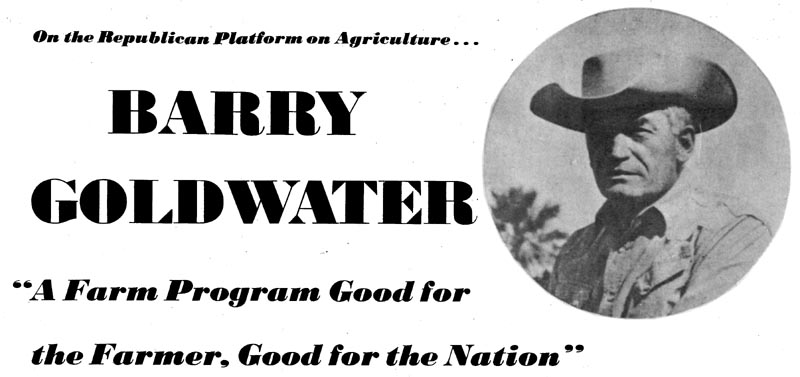 A Republican presidential candidate from Arizona can't lose, can he? Barry Goldwater stepped down from his seat in the Senate to run for president against LBJ...but was defeated in one of the worst landslides in history. He garnered only 52 electoral votes, compared to LBJ's four-hundred-eighty-six. Make sure you get out and vote today, and let's remind McCain what we think of Arizona Republicans. Labels: 1960s, 1964, barry goldwater, politics
Elmer For Governor, 1960.
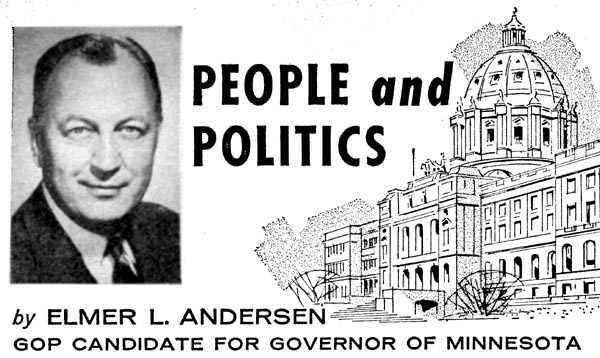 In 1960, Elmer was on the GOP ticket for Governor of the state of Minnesota. A few short weeks after he published this ad in The Farmer magazine, he won his bid, starting a controversy-free term in charge of the state. Two short years later, however, he was undone by 91 voters: in an extremely close election, he lost out to Farm-Labor candidate (and his Lieutenant Governor) Karl Rolvaag. Despite his Republican heart, Andersen was a self-proclaimed liberal to the end, even endorsing John Kerry during the 2004 election. Andersen passed away shortly thereafter. Labels: 1960, 1960s, Elmer Andersen, minnesota history, politics
Sinner For Congress, 1964.
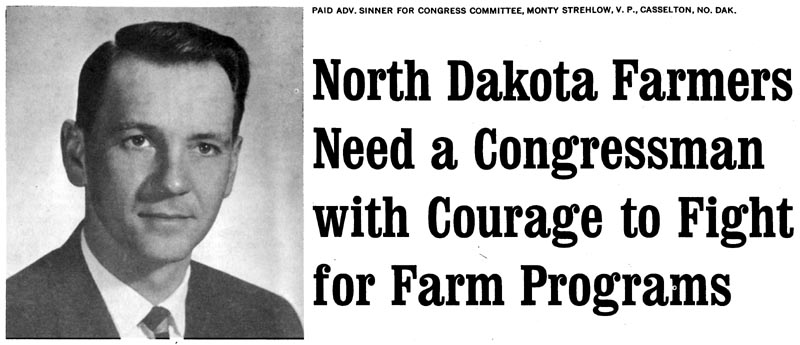 In 1964, a fresh state senator from Casselton, ND, made an attempt to move up the ladder and join Senator Quentin Burdick in Washington D.C.. Unfortunately, State Senator George Sinner was beat out by Republican Mark Andrews. Sinner's attempt at Congress was barely a speed-bump in his career: after working with a variety of local and regional governments and organizations, he became Governor of North Dakota from 1985 to 1992. Labels: george sinner, north dakota history, politics
|  |
|
|
